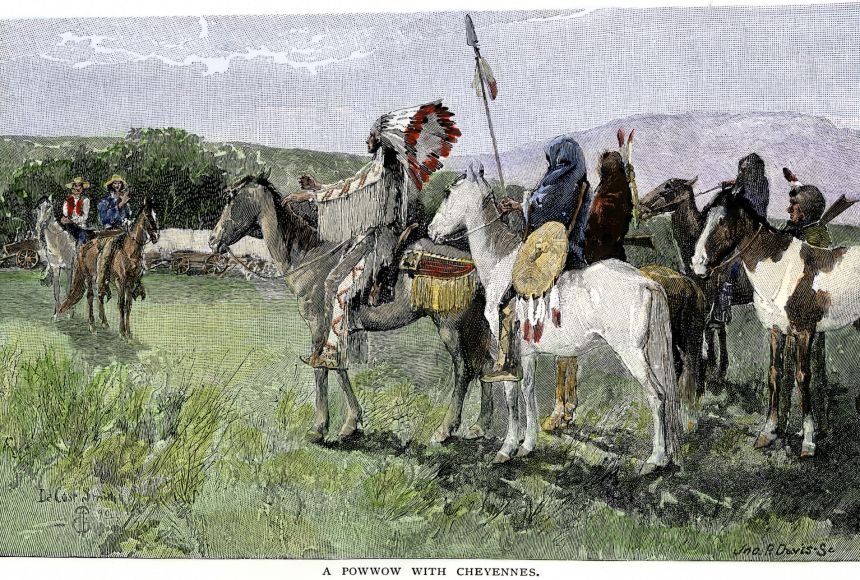ENCYCLOPEDIC ENTRY
ENCYCLOPEDIC ENTRY
Native Americans in Colonial America
Native Americans in Colonial America
Native Americans resisted the efforts of the Europeans to gain more land and control during the colonial period, but they struggled to do so against a sea of problems, including new diseases, the slave trade, and an ever-growing European population.
Grades
5 - 8
Subjects
Geography, Human Geography, Social Studies, U.S. History
Image
Diplomacy between Cheyenne and Settlers
Whether through diplomacy, war, or even alliances, Native American efforts to resist European encroachment further into their lands were often unsuccessful in the colonial era.
Photograph of woodcut by North Wind Picture Archives

Media Credits
The audio, illustrations, photos, and videos are credited beneath the media asset, except for promotional images, which generally link to another page that contains the media credit. The Rights Holder for media is the person or group credited.
Director
Author
Production Managers
Program Specialists
Producer
Intern
other
Last Updated
October 1, 2024
For information on user permissions, please read our Terms of Service. If you have questions about how to cite anything on our website in your project or classroom presentation, please contact your teacher. They will best know the preferred format. When you reach out to them, you will need the page title, URL, and the date you accessed the resource.
Media
If a media asset is downloadable, a download button appears in the corner of the media viewer. If no button appears, you cannot download or save the media.
Text
Text on this page is printable and can be used according to our Terms of Service.
Interactives
Any interactives on this page can only be played while you are visiting our website. You cannot download interactives.